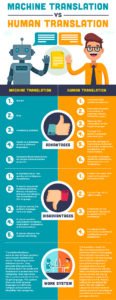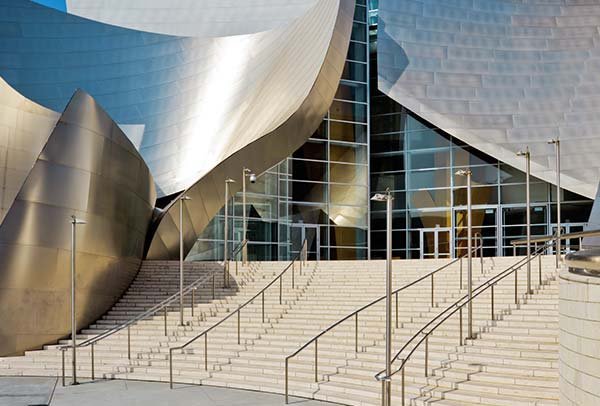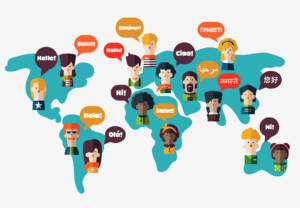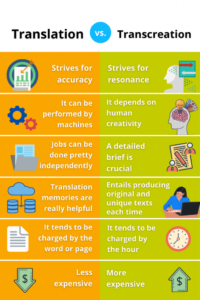The Future of AI and Translation: What’s on the Horizon?
In a world that’s becoming increasingly interconnected, language barriers are the last hurdles to be overcome. Thanks to the rapid advancements in artificial intelligence (AI), the field of translation has experienced a transformation that was once considered the stuff of science fiction. As we peer into the future, the potential for AI-driven translation seems boundless. Yet, amidst the excitement, it’s crucial to recognize that while AI holds immense promise, the subtleties, cultural nuances, and emotional depths of language are domains where human translators will always excel.
The Rise of AI in Translation: A Glimpse into the Present
The journey of AI in translation began with basic rule-based systems, gradually evolving into more sophisticated statistical and neural machine translation models. These models, powered by deep learning algorithms, have made quantum leaps in understanding languages, resulting in translations that are coherent and grammatically accurate. AI-driven translation has already redefined the way businesses communicate globally, enabled rapid real-time conversations, and provided access to information in previously unreachable languages.
AI as a Catalyst for Global Communication
The future promises even greater strides. AI has the potential to break down the remaining language barriers, fostering seamless communication across linguistic divides. Imagine a world where language is no longer a barrier to education, healthcare, diplomacy, or commerce. With AI-enabled translation, individuals and organizations can collaborate effortlessly, sharing knowledge, insights, and experiences without the limitations of language.
The Power of Neural Networks and the Big Data
The backbone of AI-driven translation lies in the neural networks and vast datasets that fuel it. AI models learn from massive amounts of multilingual text, allowing them to identify patterns, linguistic nuances, and contextual cues. This foundation empowers AI to generate translations that are increasingly natural and contextually accurate.
Enhanced Multilingual Experiences
The future will see AI-driven translation extend beyond written text. Speech recognition and synthesis technology, coupled with translation algorithms, will enable real-time conversations in different languages. This will revolutionize global events, business negotiations, and even tourism, making cross-lingual interactions as effortless as speaking your native tongue.
AI and the Speed of Translation
AI offers the promise of instant translations, a feat that’s invaluable in today’s fast-paced world. Businesses can respond swiftly to international clients, and individuals can access information without the need for manual translation. The immediacy that AI brings to translation has the potential to reshape our expectations of communication speed.
The Essence of Context and Culture
However, amid the flurry of technological advancements, certain elements remain elusive to AI: the essence of context and cultural understanding. Language isn’t a mere exchange of words; it carries cultural nuances, historical references, and emotional undertones. AI often struggles to capture the depth of these nuances, leading to translations that might be accurate in terms of grammar but fall short in terms of cultural authenticity.
Consider the simple act of translating a traditional proverb. A human translator, well-versed in the cultural backdrop, would ensure that the essence and wisdom of the proverb are preserved. An AI model might offer a literal translation, missing the depth and wisdom it conveys.
The Art of Creativity in Translation
Beyond accuracy lies the realm of creativity. Literature, marketing campaigns, poetry—all require a creative flair that AI currently cannot replicate. Adapting wordplay, maintaining rhythm, and capturing the nuances of metaphors are tasks where human translators shine. The nuances of artistic expression are often lost in machine translation, underscoring the irreplaceable role of human translators in creative industries.
Navigating the Complexities of Emotion
Emotion is another frontier where AI struggles to tread. Consider the emotional resonance of a heartfelt message or the tone of a persuasive argument. While AI can generate text that aligns with sentiment analysis algorithms, it lacks the empathy and emotional intelligence that human translators bring to the table.
The Future of AI-Human Collaboration
The future of translation lies not in the replacement of human translators but in a symbiotic partnership between humans and machines. AI excels at tasks that demand efficiency and speed, while human translators possess the empathy, cultural awareness, and contextual understanding that AI cannot replicate.

Imagine a scenario where AI provides instant translations of routine business correspondence, leaving human translators to focus on complex materials, creative content, and emotionally resonant pieces. This collaboration optimizes efficiency while ensuring that the essence and authenticity of translations are preserved.
Conclusion: Charting a Balanced Future
As we stand at the threshold of AI-driven translation’s future, it’s crucial to chart a balanced course. AI is a powerful tool that streamlines processes, enhances accessibility, and bridges communication gaps. However, we must recognize that language is not just a means of communication; it’s a vessel that carries culture, emotion, and human experience.
Human translators, with their cultural fluency, emotional depth, and artistic intuition, ensure that translations transcend mere words. They provide the bridge between languages, connecting people through the shared tapestry of humanity. While AI is a revolutionary force in translation, it’s the human touch that will forever be the heart and soul of meaningful cross-lingual communication.






